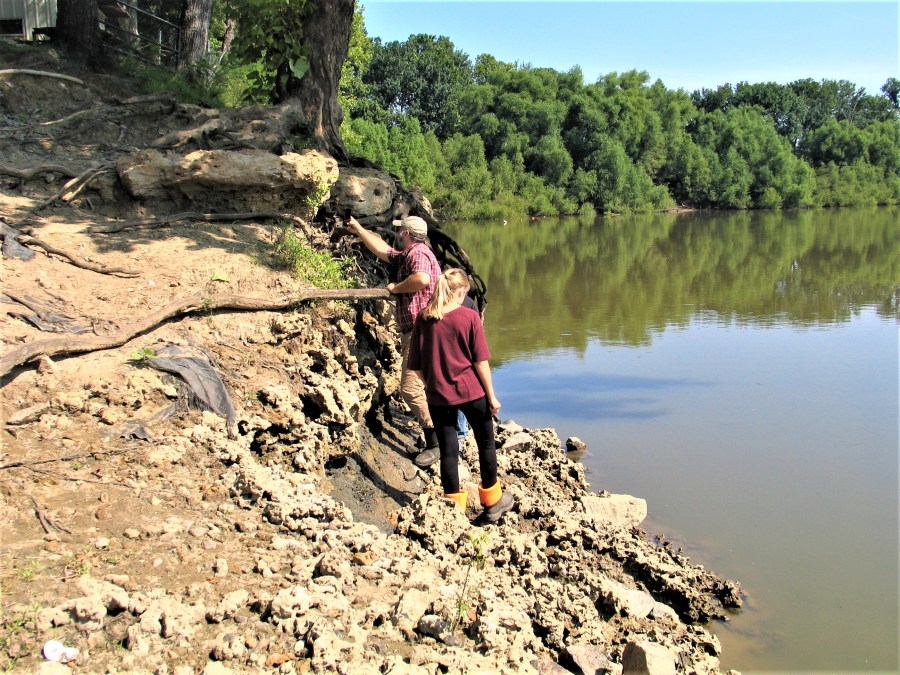HORRY COUNTY, SC (WBTW) – Horry County paleontologists have uncovered new fossilized marine vertebrates along the Grand Strand and Pee Dee River, mainly in Allison’s and Burches Ferries, and Cane Landing.
The process to uncover and clean these fossils is a long one in this research project, and it helps us learn more about the county we live in.
The last time paleontologists Donald Kirkpatrick and David Cicimurri went out to look for Horry County fossils was last week.
Even though they’ve worked on the project since 1991 to learn more about what life in Horry County used to see in their waters and on land, they’re always finding new marine vertebrates.

Paleontologists search through limestone at Allison’s Ferry in Horry County for new marine vertebrate fossils.
“Just at Allison’s Ferry, we’re around 30 new ones that have not been published in the literature, and we are just beginning our work on Canes Landing and Burches Ferry,” said Kirkpatrick.
Locals are always collecting, but Kirkpatrick says what’s different now is that the project is focused on collecting, sorting and cleaning the pieces in an acidic solution, which hasn’t been done before.
“The way we’re approaching this research project, we already know we’re going to find things that nobody else has talked about. Up to this time, the published information is about things that people could collect by just going out and looking,” said Kirkpatrick. “Nobody has done the systematic study, dissolving the limestones, dissolving the other rocks, and then examining things under a microscope.”
They won’t have a full list out until the project is done and the work is published, which could be as soon as another three to five years.
The majority of what they’re finding are shark teeth.
“During the late Cretaceous time frame, South Carolina was underwater, all the way to where we call the Sandhills today,” he said. “That was the beach.”
Why did they pick Allison’s and Burches Ferries and Cane Landing to search for these relics?
Kirkpatricks says the areas have all been known to have fossils for over 100 years, where the locals go to collect.
“I found out about the sites from local fossil collectors who took me to them, but I also knew about them from research,” he said. “The old literature from the 1800s.”
The last step is putting the fossil and bone pieces in a sieve, but that’s only after nearly up to six months of those pieces soaking in a solution.
You can view the details of the research project by clicking here.









